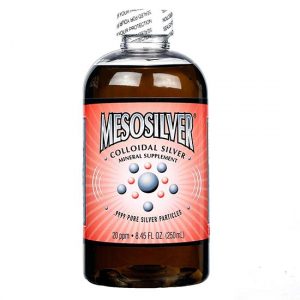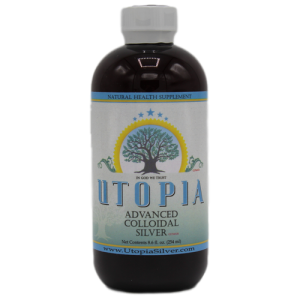Colloidal Silver | Silver Colloids
Colloidal Silver | Silver Colloids

A solution of water containing nanometer sized particles of suspended silver. The total silver content is expressed as milligrams of silver per liter (mg/L) of water which is numerically the same as parts per million (ppm). The total silver content is divided into two forms of silver; ionic silver and silver particles. Ionic silver solutions are products whose silver content is predominantly in the form of silver ions.


A solution of water containing nanometer-sized particles of suspended silver. The total silver content is expressed as milligrams of silver per liter (mg/L) of water which is numerically the same as parts per million (ppm). The total silver content is divided into two forms of silver; ionic silver and silver particles. Ionic silver solutions are products whose silver content is predominantly in the form of silver ions.
Many forms of colloidal silver and other colloidal minerals are available in health food stores, or on the nutritional supplement aisle of some grocery stores. But do silver colloids work? What’s the difference between a silver colloid and ionic silver? What’s a mild silver protein, and what does it have to do with colloidal silver? You might even have wondered if it was a myth that ionic silver or mild silver protein products could turn you blue.


MesoSilver is an all natural mineral supplement in the form of nanoparticle colloidal silver. It is a true colloidal silver, which means the majority of MesoSilver consists of silver particles, not silver ions. Learn more. In fact, it has the highest nanoparticle concentration: 80% particles (typical). Others are only 10%.

Advanced Colloidal Silver is a mineral supplement used to boost and augment the body’s immune system. It is a silver mineral suspension produced at about 30 ppm using .9999 pure silver in de-ionized water sourced from deep water wells in the Edwards and Trinity Aquifer recharge zones..
Particle surface area is what determines a colloids ability to react with its environment. Reactivity increases with increasing surface area. Particle surface area can be determined by measuring the physical properties of a colloid. Because it is comprised of two important physical properties, namely, particle size and particle concentration, it serves as good metric for comparing colloids.
Since it can be expressed as a single number, particle surface area can be considered a figure of merit for the effectiveness of a colloid. In this context, effectiveness is defined as the ability of the colloid to react with its environment. The higher the surface area, the more reactive the colloid, hence the more effective it is in reacting with its environment. For a comparison of commercial products based on particle surface area see the Comparison Table.
No. All silver colloids generators on the market produce ionic silver. There is no equipment for sale by any manufacturer that will produce ‘true colloidal silver’ consisting of mostly silver nanoparticles.
Monatomic Silver is claimed to be colloidal silver that consists of particles that are single atoms of silver suspended in water. It is further claimed that because the silver particles are so small these products do not exhibit a Tyndall effect and the result is a product that is as clear as water.
Many producers of ionic silver products (masquerading as colloidal silver) use images produced by a Transmission Electron Microscope (TEM) to show what they claim are silver particles in their products. These TEM images are usually offered to support representations of small particle size distributions.
A transmission electron microscope (TEM) is a kind of microscope that uses a beam of electrons instead of a beam of light (as in an optical microscope) to form a large image of a very small object. The transmission electron microscope has an electron beam, sharply focused by electron lenses, passing through a very thin specimen onto a fluorescent screen, where a visual image is formed.
While it is common for producers of ionic solutions to use TEM images in their promotional literature, those images are misleading in the extreme. There are three main problems with using transmission electron microscopes for analyzing colloidal silver:
The short answer is that in order for the TEM solutions to photograph particles, all water in the solution must be evaporated. When that happens, any silver ions in the solution form a silver oxide compound. Because the number of silver oxide particles is far greater than the number of silver colloid particles, it is the particles of silver oxide which predominate in TEM images.